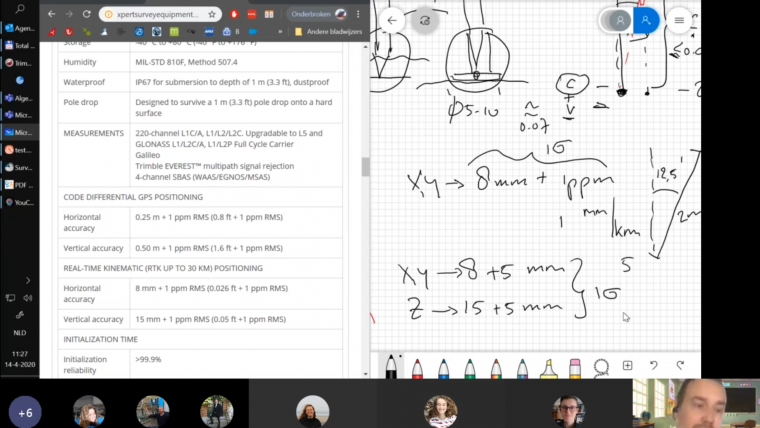Hydrographic Education During a Lockdown
Experiences in the Netherlands
On 12 March, the Dutch government decided to ‘lock down’ all activities involving multiple persons, including education. That decision immediately affected the hydrographic institutions in the Netherlands. The Netherlands has an active four-year Cat. A course in Ocean Technology at the NHL Stenden University of Applied Sciences – Maritime Institute Willem Barentsz (MIWB), and a 3+3 month Cat. B course at Skilltrade. Both had to cope with the lockdown in different ways due to their different set-ups and student populations.
Organizational Situation After Lockdown
Although education is not a ‘contact’ profession in the strict sense (or at least it shouldn’t be), any school could be a source of spread of the virus. Therefore, the MIWB decided to close its building and therefore its ‘face to face’ activities overnight, with one day of the examination week remaining. Some students were immediately looking forward to an extended (working) holiday. However, by the end of the day on (Friday) 13 March, the MIWB had a temporary solution, which was implemented over the weekend. By Monday, ‘regular’ lectures had resumed.
Skilltrade, as a small institute, had slightly more leeway concerning their face to face activities and did not have to close the building for another two weeks. Initially, teaching continued in larger classrooms (allowing for 1.5 m distancing). Practical sessions were planned in smaller groups in a rotational scheme to allow the use of small vessels as the regular survey vessels no longer accepted passengers. So essentially, everything was looking good for finishing the 24th Class. However, Skilltrade, being an international course, attracts most of its students from abroad, including Africa and the Middle East. Over time, other governments started to close their borders or implement quarantine measures, resulting in about half the students leaving one by one to reach their home country before being ‘locked down’ in the Netherlands.
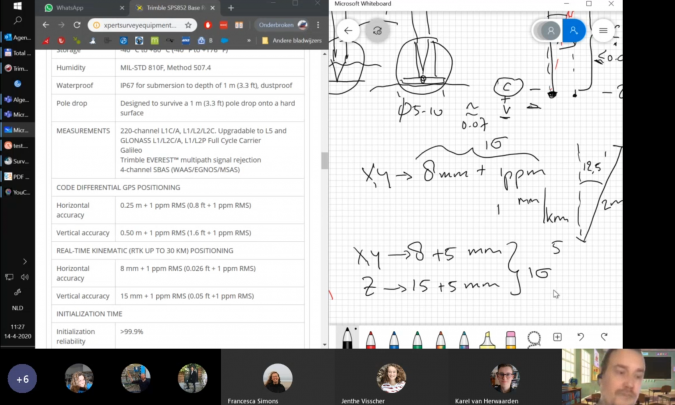
Online Teaching
The MIWB resumed its normal lecture programme immediately after the weekend, choosing to teach most of its lectures using web conferencing. With the aid of a digitizer pen, webcam and microphone, lectures resumed with the students now spread around the country. Presentations were shared on-screen and the classroom whiteboard was replaced with a drawing app and the digitizer pen. There were some initial technical hurdles as the servers for the web conferencing tools could not always handle the number of users, but over time these issues became fewer and fewer.
To limit the amount of bandwidth use, all students switch off their video during regular lectures. To minimize disturbances, they also switch off their microphones. Questions are initiated using the chat tool and, if required, elaborated with audio and sometimes screen sharing. Students also quickly found that they could record the lectures so that they could view them again later. This was essential for those students who had technical (usually bandwidth) issues at their own locations during a lecture.
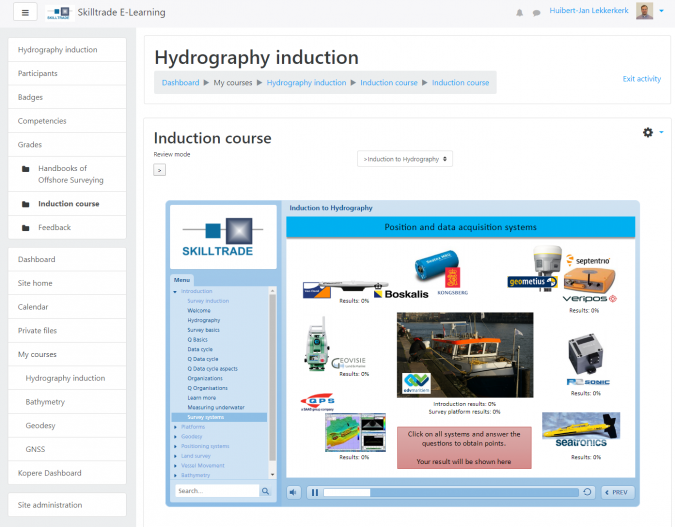
Some of the modules were not taught online but used e-learning materials to allow offline learning, giving the students challenges and assignments accompanied by presentations with a voice-over or existing e-learning work. As a result, students could be kept busy and the original lecture schedule followed for about 80%. So far, no formal examinations have been held, with the hope that the remaining exams can be held ‘in class’ when the school reopens. However, an alternative plan has been put in place with digital examinations. The main issue is of course invigilating those exams. This will be done by asking the students to point a camera at themselves and their screen with an open microphone. Privacy issues have been investigated and procedures established to make this legal (and workable).
At Skilltrade, with half the students gone, the last two weeks of the regular Cat. B course were postponed until measures are lifted. Students have been directed towards the regular Skilltrade e-learning modules normally taught in the first three months, to enhance their knowledge of the remaining subjects. At the same time, Skilltrade initiated a free ‘Induction to Hydrography’ course for those employees and potential students sitting at home with time on their hands. The course has been a success, with more than 150 registrations in a few weeks. Skilltrade also used the induction course to let people experience the new set of Handbooks of Offshore Surveying, which were to be launched during Oceanology 2020. The first chapter of each of the three books was made available as part of the course materials in the e-learning environment.
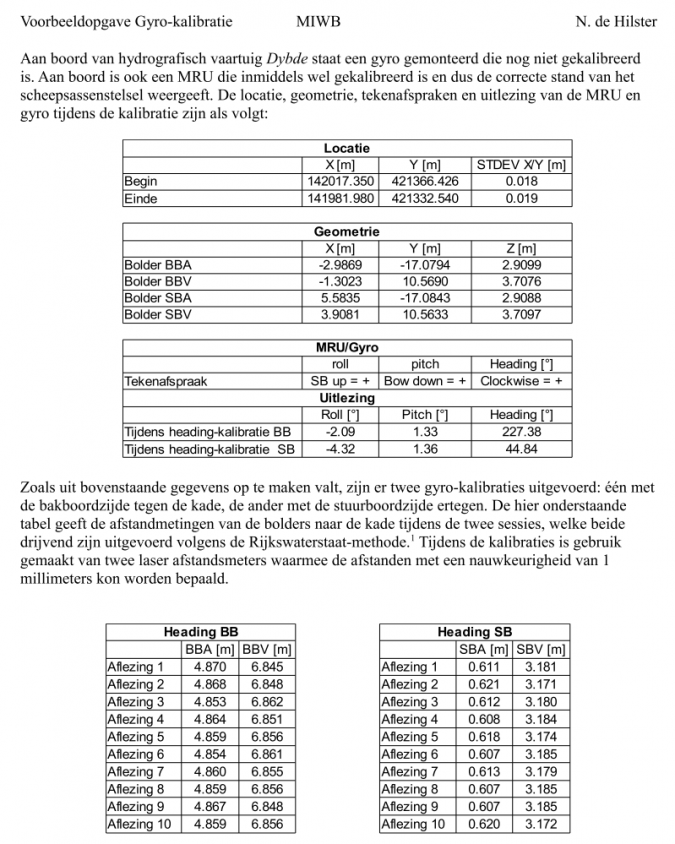
Hydrographic Practice
Hydrographic surveying is an applied science and the theoretical or classroom subjects cover only about 80% of the study load. For both courses, practice follows theory and is planned towards the end of the course or year. As such, the school closure happened essentially at the start of the practical period. As mentioned, Skilltrade managed to create an alternative plan, only to find it could not be implemented due to a lack of students. At the MIWB, with the building closed and a ban on groups of more than 3 persons, there was no logistical solution available considering there are around 60 students spread over the first 3 years who require practical training. Only the fourth and final year students ‘escaped’, as they are doing their thesis research at a hydrographic organization elsewhere in the Netherlands.
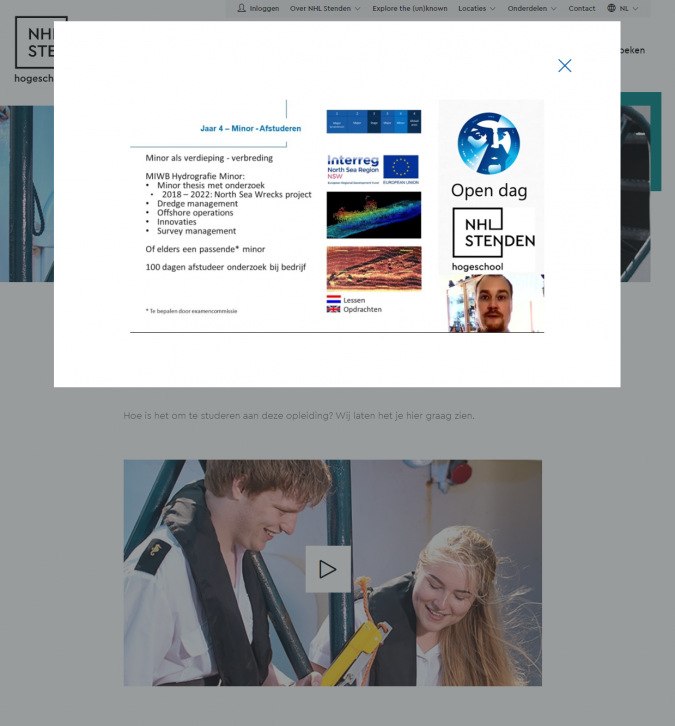
As the buildings will not open any earlier than 1 June, an alternative planning has been created. As far as possible, preparatory assignments have been developed for the practical subjects. For example, one of the lecturers has developed software to generate individual sets of gyro and motion sensor calibration measurements on a theoretical vessel (including measurement errors). This means that the students can prepare their calculation sheets so that the only thing required during practice is to do the actual measurements. Normally, first- and second-year students do a joint two-week project at the end of the year, and the third-year students a two-week individual project. This involves mobilizing a vessel, acquiring data and processing the data into a chart and report. However, as data collection is not possible until June, the lecturers have made existing data sets from previous years available, so that the processing (charting) part can still be done, minimizing the required time for actual practice in June.
Part of the second year is also a visit to a hydrographic congress. This year, Oceanology 2020 was planned. With a postponement until December, the students will not be able to visit Oceanology or any other congress in the 2019–2020 academic year. As an alternative, they have been asked to visit several webinars and websites. Although this does not replace the human contact, it is a substitute for the accumulation of new knowledge and broadening their horizon. Overall, about 10% of the study load cannot be covered without practice. At the time of writing, we hope that the remaining exercises can be performed in the last four weeks of the 2019–2020 academic year. If not, they will be performed in the autumn of 2020, at the start of the 2020–2021 academic year. This will however require administrative measures, as some students may not pass the minimum requirement for entering the next year.
Hurdles and Challenges
Apart from practice, the main challenge has been to keep the students motivated. This is much more difficult when teaching at a distance, although tools such as online quizzes are used. Just before the spring break, we started to notice fatigue in the students. Student coaching sessions are held every week and the students generally indicated that their main challenge was to keep focused without the ‘regularity’ of going to school. Of course, there are always those who thrive in a situation like this, but for most it was a daily struggle to keep a normal schedule. After spring break, we could feel new energy in the classroom, so hopefully the students can keep it up until they are allowed back in the school (or the summer break arrives, whichever comes first).
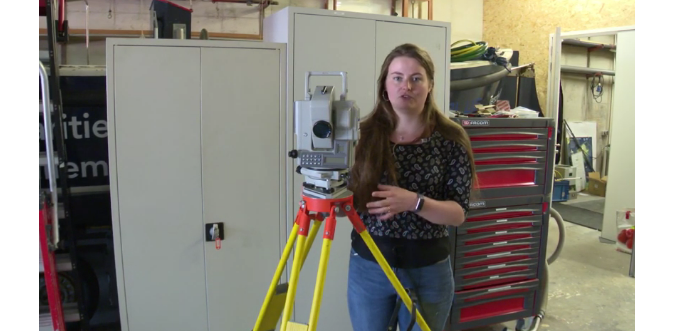
Attracting New Students
Every school requires new students. In the case of hydrography, there is a small chance these students will find you on their own. So, you need to reach out. Skilltrade, being small-scale, takes a personal approach to this, and this year the free induction course is starting the conversation with potential clients and students.
For the MIWB, which relies on students from secondary schools all over the Netherlands, individual visits are of course not an option. Each autumn, there are large ‘markets’ where the courses present themselves regionally. In late autumn and spring, potential students then visit the various courses and institutes that they are interested in to make their final decision before the summer. With one session in November and the next at the end of February held in the traditional ‘face to face’ way, the last session in April still had to take place. Like teaching, the personal visits were replaced with a distance ‘open day’. The potential students were informed through recorded presentations and a short movie with various teachers giving a ‘virtual tour’ of the school. Students were available on Facebook to answer questions from potential students. For the Cat A course, this was a big success, with over 100 visits, which is on a par with a regular open day. The Cat A open day was even in the top 4 of NHL Stenden visits.
Conclusion
The hydrographic courses in the Netherlands have been able to adapt to the new situation but feel limited in their ability to teach the practical subjects. We have also found that teaching at a distance can never fully replace classroom contact. After all, we deal with people who have ‘people’ issues.
More information
MIWB Online Open Day: https://www.nhlstenden.com/online-open-dag/ontdek-onze-opleidingen/ocean-technology
Skilltrade Hydrography Induction course: http://skilltrade.academy/

Value staying current with hydrography?
Stay on the map with our expertly curated newsletters.
We provide educational insights, industry updates, and inspiring stories from the world of hydrography to help you learn, grow, and navigate your field with confidence. Don't miss out - subscribe today and ensure you're always informed, educated, and inspired by the latest in hydrographic technology and research.
Choose your newsletter(s)
